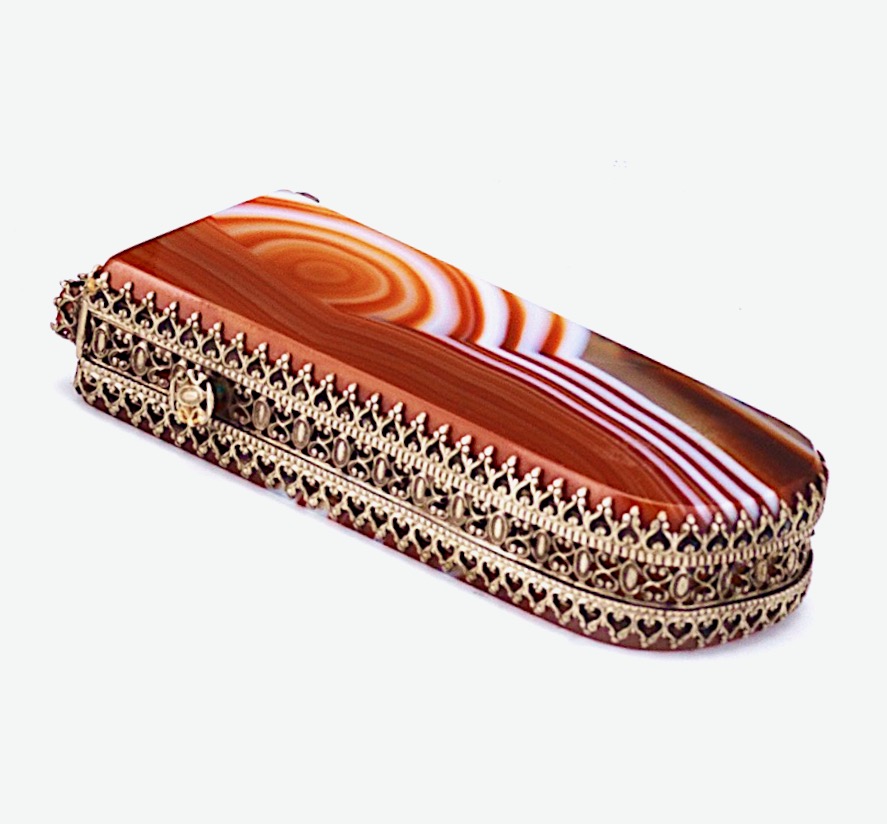

Title: Antique 19th-century Agate And Metal Match Safe Box Holder
Shipping: $29.00
Artist: N/A
Period: 19th Century
History: Art
Origin: Northern Europe > England
Condition: Excellent
Item Date: N/A
Item ID: 422
Absolutely beautiful and rare. Antique 19th-Century Pocket Case Agate And Metal Match Safe Box Holder and Match Striker. A little history about match strikers. A small, portable container used to store and carry matches. It typically has a hinged metal or agate (a type of gemstone) cover that opens to reveal a compartment for holding the matches, and a striker surface on the exterior or interior of the case for lighting the matches. These types of match safes were popular in the 19th century as a way to keep matches dry and easily accessible. They were often made of metal or agate and were small enough to fit in a pocket or purse. They were often ornately decorated and were considered collectible items.
The history of wood matches dates back to the early 19th century. Prior to the invention of wood matches, people used tinderboxes to start fires. A tinderbox consisted of a small container filled with flint, steel, and tinder (a combustible material used to start a fire). To start a fire, the tinder was struck with the flint and steel, producing a spark that would ignite the tinder and start the fire. In 1826, John Walker, an English chemist, invented the first friction match, which was made of a wooden splint coated with sulfur and other chemicals. When the match was struck on a rough surface, the chemicals would ignite and the match would light. These matches were called "friction matches" because they were ignited by friction. However, friction matches had some limitations. They were difficult to light, and the sulfur smell was unpleasant. In 1836, Charles Sauria, a French chemist, improved upon the friction match by adding white phosphorus to the mixture. These matches, called "Lucifers," were much easier to light and did not have the unpleasant sulfur smell. However, they were dangerous to manufacture because the white phosphorus was highly toxic. In the late 19th century, wood matches became more widely available and were produced on a large scale. They were made using a process called "tip dipping," in which the ends of wooden splints were dipped in a mixture of chemicals and then allowed to dry. These matches were much easier to light and safer to use than friction matches or Lucifers. Today, wood matches are still widely used, although they have been largely replaced by disposable lighters in many parts of the world.